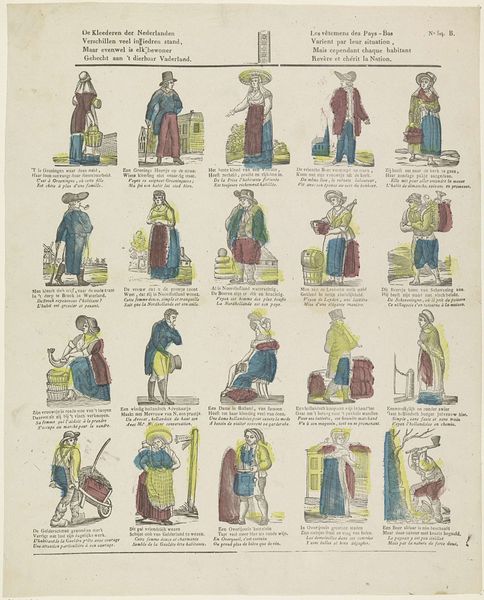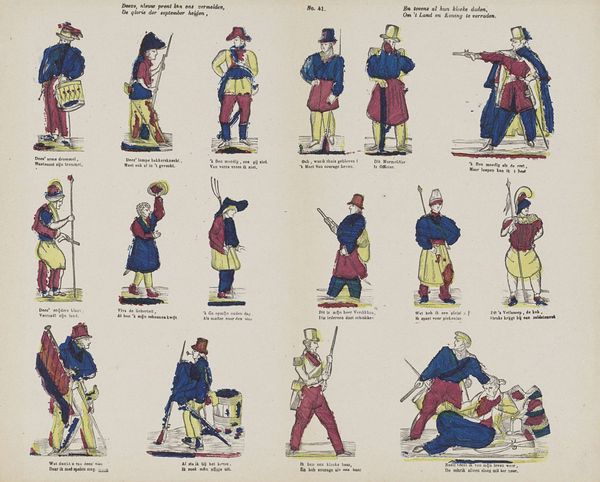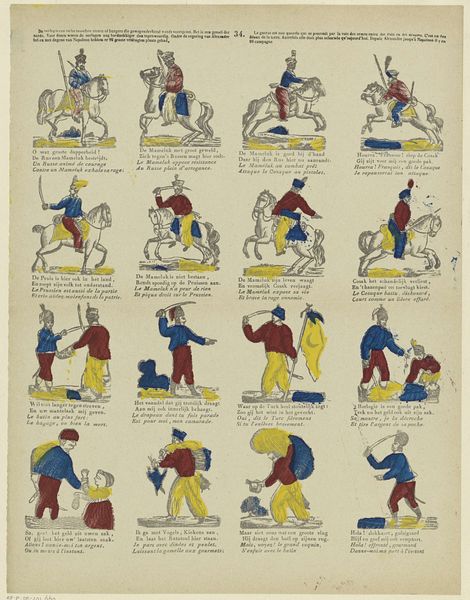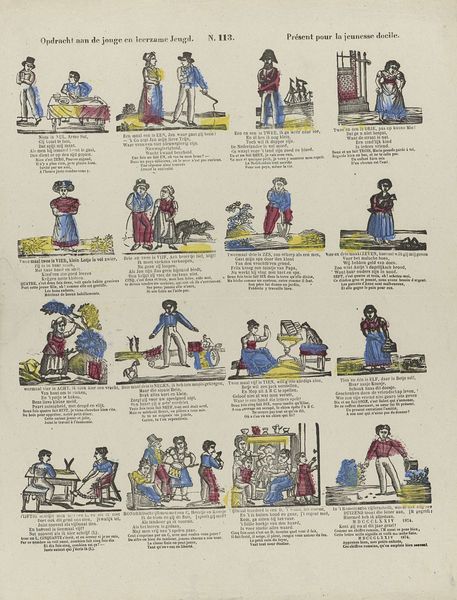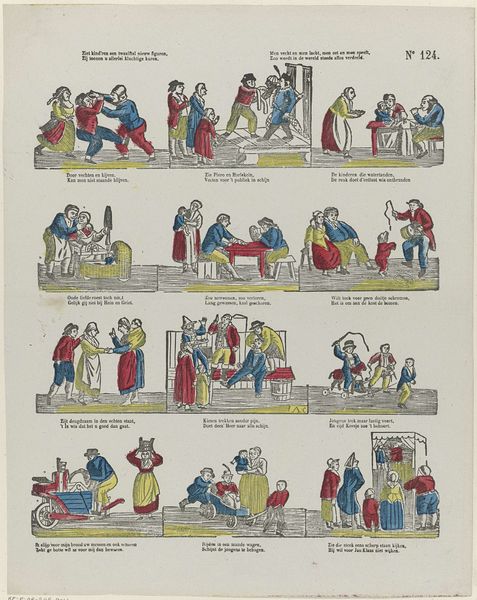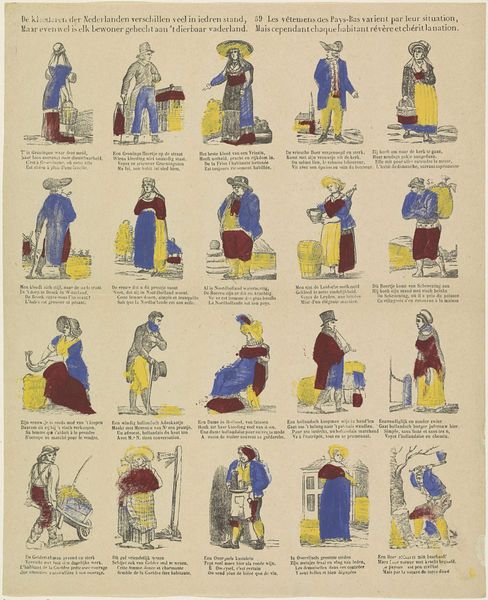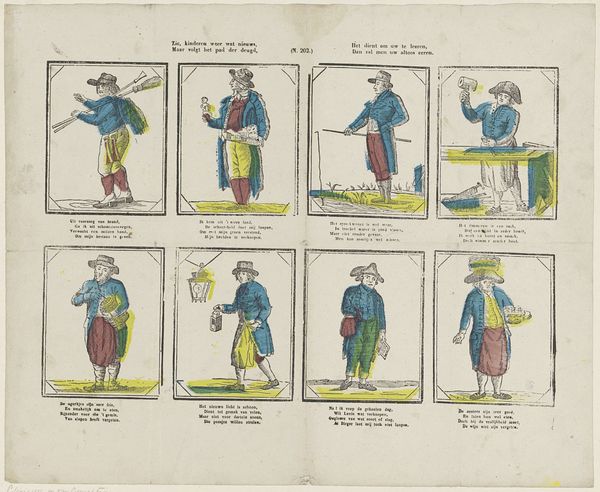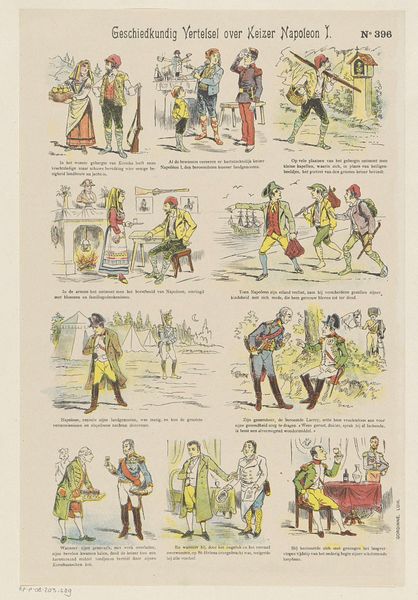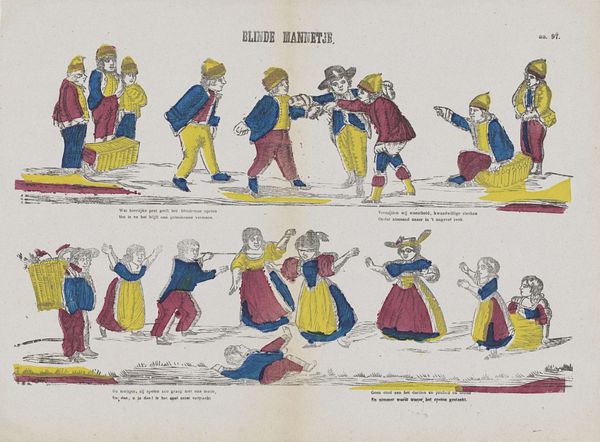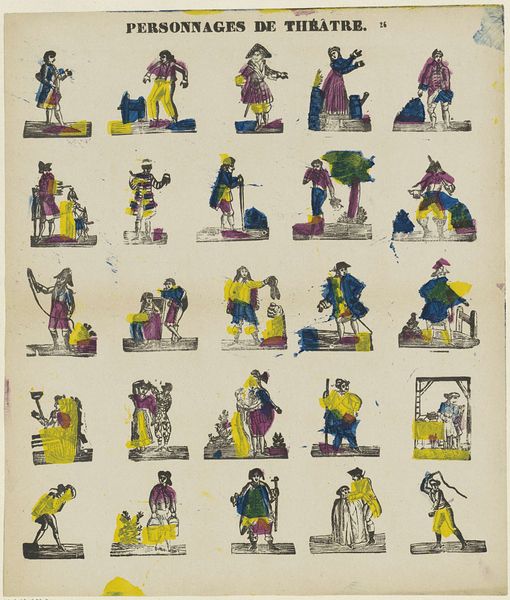
Hier vindt men nering en vertier, / Elk wint zijn brood op zijn manier. / 't Zij op de straat of in de winkels, / Maar nimmer bij de fransche kinkels 1848 - 1881
0:00
0:00
lutkiecranenburg
Rijksmuseum
print, engraving
#
narrative-art
# print
#
figuration
#
folk-art
#
genre-painting
#
engraving
Dimensions: height 398 mm, width 304 mm
Copyright: Rijks Museum: Open Domain
Editor: This is an engraving from between 1848 and 1881, titled "Hier vindt men nering en vertier…" which translates to "Here one finds trade and amusement..." by Lutkie & Cranenburg, currently residing at the Rijksmuseum. It’s divided into small scenes of people working. There’s something very… quaint about it. What historical and cultural currents do you think might be running through this piece? Curator: “Quaint” is an interesting word. Consider this: it's a depiction of everyday labour paired with an anti-French sentiment in the inscription. Knowing the period, 1848-1881, we are looking at a post-Napoleonic Netherlands, defining, or rather *re*defining its national identity. How do you think this print engages with that sociopolitical project? Editor: So, the emphasis on labour… it's like celebrating Dutch industriousness as a way to set themselves apart? But the figures feel somewhat… caricatured. Curator: Precisely. These aren't realistic portraits, are they? This stylized, almost folk-art approach, when coupled with the text, creates a clear “us vs. them” narrative. It speaks to a desire for economic independence and a rejection of foreign influence – and maybe even anxiety regarding it? Who is included in that "us," and perhaps more importantly, who is excluded? Editor: It’s like they are literally and figuratively drawing lines of inclusion and exclusion. Curator: Exactly. Consider, also, how the style – a relatively inexpensive print – would make this message accessible to a broad audience. Did the perspective change how you view the artwork? Editor: Absolutely. Seeing it as part of a larger, politically charged discussion makes it so much richer. It's no longer just a collection of occupations; it's a statement. Curator: And remember, even seemingly innocent depictions of everyday life can be powerful assertions of cultural and political identity. It’s the power of the everyday.
Comments
No comments
Be the first to comment and join the conversation on the ultimate creative platform.
